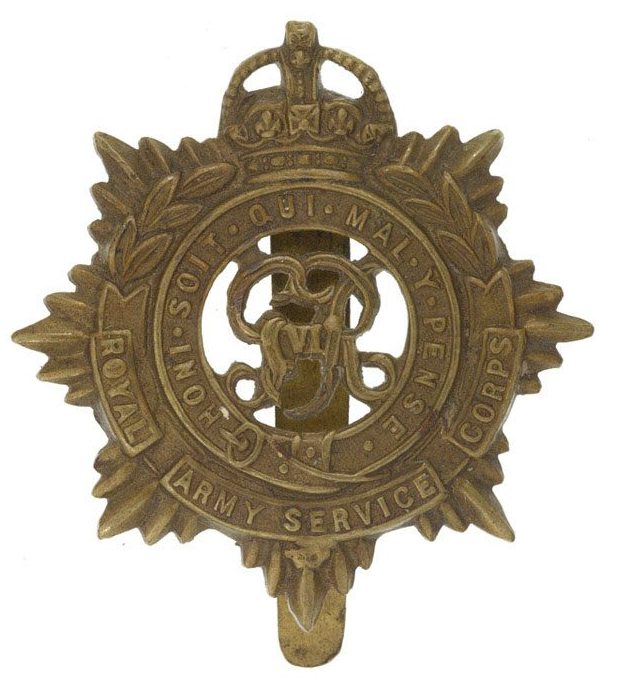Personal Details
Born: In 1894 in Oswestry, Shropshire.
Family: He was the eldest of two children born to Richard Jones, a domestic groom, and his wife Ellen. He married Agnes Davenport on 5 April 1915 in St. Alkmund’s Parish Church, Whitchurch and together they had one child, Dorothy M. There is a report in February 1930 in the Staffordshire Sentinel of the public examination in bankruptcy of George Richard Jones, Whitchurch butcher, where he revealed that ‘he kept a second establishment in Pant where there was a woman and four children’.
Residence: In 1911 he lived at 11 Yardington, Whitchurch. Kelly’s directory 1934 identifies a George Jones, butcher, at 33 Green End, Whitchurch.
Employment: He was a butcher
Died: Not known
Military Details
Regiment: Royal Army Service Corps
Rank: Lance Corporal
Service Number: M2/181543
Date of Enlistment: 11 December 1915
Date of Discharge: Not known
Reason for Discharge: Not known
George was awarded the Campaign Medals (British War Medal and Victory Medal)

The British War Medal (also known as 'Squeak') was a silver or bronze medal awarded to officers and men of the British and Imperial Forces who either entered a theatre of war or entered service overseas between 5th August 1914 and 11th November 1918 inclusive. This was later extended to services in Russia, Siberia and some other areas in 1919 and 1920. Approximately 6.5 million British War Medals were issued. Approximately 6.4 million of these were the silver versions of this medal. Around 110,000 of a bronze version were issued mainly to Chinese, Maltese and Indian Labour Corps. The front (obv or obverse) of the medal depicts the head of George V. The recipient's service number, rank, name and unit was impressed on the rim.
The Allied Victory Medal (also known as 'Wilfred') was issued by each of the allies. It was decided that each of the allies should each issue their own bronze victory medal with a similar design, similar equivalent wording and identical ribbon. The British medal was designed by W. McMillan. The front depicts a winged classical figure representing victory. Approximately 5.7 million victory medals were issued. Interestingly, eligibility for this medal was more restrictive and not everyone who received the British War Medal ('Squeak') also received the Victory Medal ('Wilfred'). However, in general, all recipients of 'Wilfred' also received 'Squeak' and all recipients of The 1914 Star or The 1914/1915 Star (also known as 'Pip') also received both 'Squeak' and 'Wilfred'. The recipient's service number, rank, name and unit was impressed on the rim.

